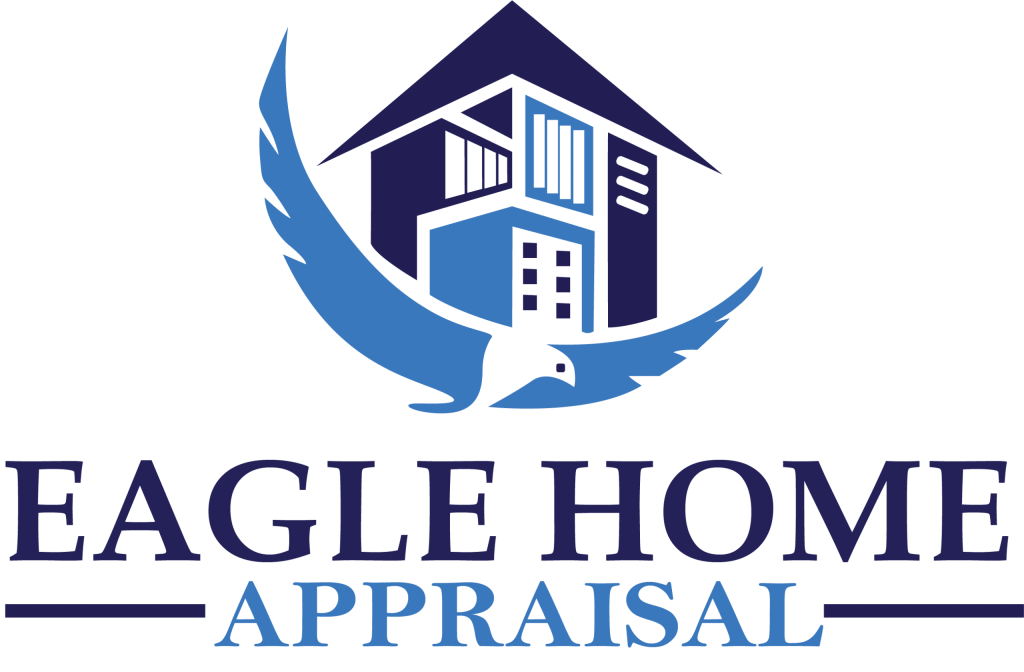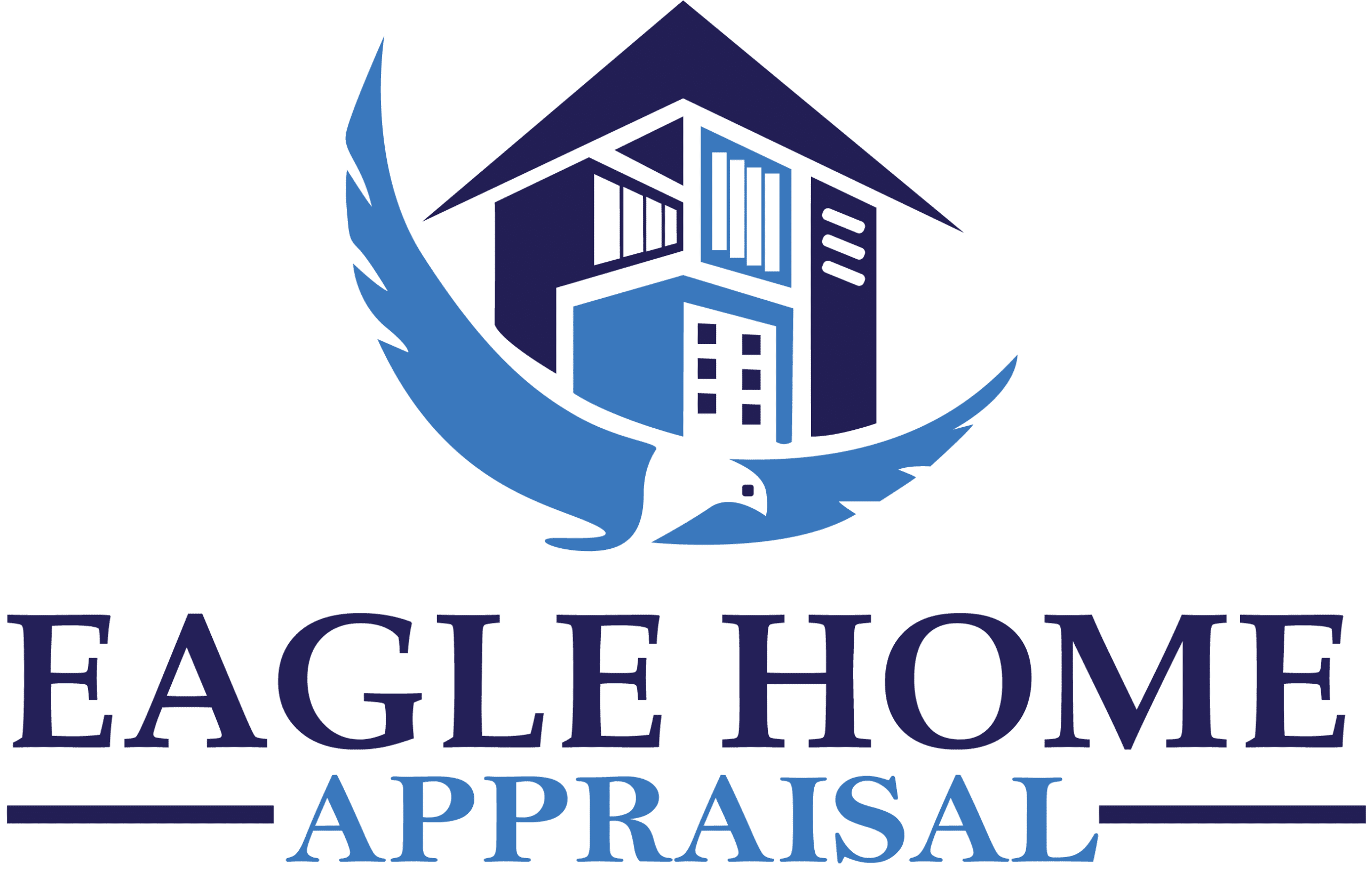What is included in a standard home appraisal report in Gilbert?
 Obtaining a home appraisal isn’t just a formality—it’s a pivotal moment in any real estate journey, whether you’re navigating a sale, purchase, estate settlement, divorce, or refinancing in Gilbert, Arizona. Yet, the standard home appraisal report remains mysterious for many property owners and buyers. What exactly does an appraiser include? How does the report go far beyond assigning a “price”?
Obtaining a home appraisal isn’t just a formality—it’s a pivotal moment in any real estate journey, whether you’re navigating a sale, purchase, estate settlement, divorce, or refinancing in Gilbert, Arizona. Yet, the standard home appraisal report remains mysterious for many property owners and buyers. What exactly does an appraiser include? How does the report go far beyond assigning a “price”?
At Eagle Home Appraisal Gilbert, we believe that the more transparent and thorough our reports, the more confidence our clients will have in their next steps. A standard home appraisal follows strict regulatory and industry guidelines, tailored to the latest Gilbert market conditions and local nuances. Each section of a typical report serves a purpose: to ensure clarity, support the final value, and provide an accurate, court-defensible record for lenders, attorneys, or owners.
Cover Page and Identifying Information
The opening of every home appraisal report provides critical context for the rest. While it might seem like a formality, the data on the cover page sets the stage for legal recognition and clear communication among all parties. In a Gilbert appraisal, this page typically contains:
-
Property Address and Legal Description: Not just a street address, but reference to legal lot numbers or parcel identification from the county, so there’s no ambiguity.
-
Type of Assignment: Whether for a purchase, refinance, legal matter, divorce, or estate—important because reporting requirements can differ.
-
Names of Owner(s) and Client(s): Documenting who owns the property and who ordered the report (this could be a lender, attorney, estate executor, or the owner).
-
Appraiser’s Credentials and Qualifications: Including name, license number, and company (critical for legal compliance and client trust).
-
Inspection and Report Dates: The valuation is accurate “as of” a specific date; this can be crucial in cases like estate settlement or divorce.
-
Intended Use and Users: Who the report is for and how it’s meant to be used (e.g., for lending, IRS reporting, private sale).
While this might seem routine, clarity and precision here prevent mistakes, legal questions, and confusion later. For instance, a typo in a legal description can derail a closing, or confusion about the intended use can make a report invalid for lenders. Our team triple-checks these basics, confirms details with clients, and ensures that from page one, your interests are protected.
Detailed Property Description
In a home appraisal, the devil is often in the details. That’s why a comprehensive property description is one of the longest and most technical sections of the report. Here’s what’s included for homes in Gilbert:
-
Lot Size, Shape, and Dimensions: Including total land area, frontage, depth, and any notable lot features (corner lot, cul-de-sac, irregular shape).
-
Zoning Classification: Spell out city or county zoning, allowable uses, and any restrictions or overlay districts that may impact value or future improvements.
-
Home Characteristics: Year built, architectural style, number of stories, exterior materials, roof type, foundation and construction details.
-
Room and Bath Count: Quantifying bedrooms, bathrooms (full, half, three-quarter), finished basements, bonus rooms, dens, or offices.
-
Gross Living Area: Total square footage of finished, above-grade residential space—excluding garages, basements (if unfinished), or outbuildings.
-
System and Infrastructure Details: Age and type of HVAC, plumbing and electrical, exterior features (fence, landscaping, irrigation).
-
Upgrades and Renovations: Noting recent remodeling, new roofs, upgraded windows, kitchen or bath overhauls, and their impact on effective age.
-
Special Features: Pools, spas, solar panels, smart home tech, custom cabinetry, luxury appliances—anything affecting value that distinguishes the home locally.
-
Physical Condition and Deferred Maintenance: Honest documentation of any needed repairs, worn finishes, roof leaks, foundation cracks, or outdated major systems. This is assessed through the appraiser’s direct physical inspection and, at times, cross-checked with public building permit records or previous MLS data.
This robust profile ensures that the value opinion is based on quantifiable, defendable facts—not impressions or rumors. For experienced Gilbert appraisers, recognizing nuances like a rare deep lot, an upgraded RV gate, or a casita with rental potential can mean thousands of dollars in correct valuation and a smoother path through lending or legal review.
Neighborhood and Market Condition Analysis
No property exists in a vacuum. A home’s value depends heavily on its surroundings—from nearby schools and parks to broader market trends sweeping through Gilbert. This section provides crucial context for understanding where the property fits and how external factors shape demand and value.
-
Neighborhood Boundaries and Description: A clear map or description specifies the area being considered—in urban Gilbert, this could mean within certain cross streets or subdivisions; in rural sections, major roads or natural features define boundaries.
-
Property Uses in the Area: Are most homes owner-occupied? Are there rentals, vacation homes, commercial influences, or new construction nearby?
-
Local Amenities and Infrastructure: Proximity to shopping centers, parks, golf courses, walking trails, schools, hospitals, and major employment centers—especially relevant in fast-growing, family-oriented Gilbert.
-
Trends in Housing Demand and Supply: Is the local market favoring buyers or sellers? Are prices rising, flat, or falling based on sales volume, days on market, and list-to-close ratios?
-
Environmental or External Factors: Any recurring issues—flood zones, heavy traffic, adjacent commercial uses, public works—are disclosed since they can depress or enhance value.
-
Community Reputation or Planned Developments: The arrival of a new school, mall, or corporate employer could change demand and values over time; so could ongoing issues like noise or poor maintenance in surrounding homes.
Appraisers support all observations with recent data: map visuals, census stats, real estate sales, and sometimes school performance reports. A well-done neighborhood analysis doesn’t just check boxes for lenders—it ensures that the subject property is compared fairly and accurately to appropriate “comps” and that the report will withstand scrutiny if questioned in a legal or tax context.
Highest and Best Use Analysis
One of the most technical, but crucial, parts of a standard report is the “Highest and Best Use” analysis. This determines the most profitable, legally viable, and physically possible way to use the land and any improvements. Why does this matter for owners and lenders in Gilbert?
-
Legal Permissibility: The appraiser assesses what the lot is legally allowed for under current zoning, deed restrictions, or association rules. Could it be split, developed, or used for something other than a single-family home?
-
Physical Possibility: Topography, lot shape, access roads, utility hookups, and environmental limitations are all considered. Steep slopes, flood risk, or utility easements can rule out otherwise attractive projects.
-
Financial Feasibility: Would building out or altering the property be economically sensible in current local conditions? For example, adding a second dwelling unit might boost value in some parts of Gilbert but not others.
-
Maximum Productivity: The appraiser concludes whether the current use (e.g., a single-family residence) is the optimal use or if conversion (such as to a duplex or commercial use) would create higher value and marketability.
For most homes in established neighborhoods, the highest and best use is straightforward: continued residential use. However, for larger parcels, corner lots, or transitional areas, this section can directly affect value. If there’s redevelopment or multi-family potential, a skilled appraiser’s analysis here can be worth tens of thousands to an owner, lending partner, or estate.
Site Map, Floor Plan, and Property Sketches
Visual, spatial, and dimensional accuracy are cornerstones of a credible appraisal. This section is dedicated to ensuring reviewers understand precisely how the property lays out, inside and out.
-
Site Map: Provides a view of the lot in relation to streets, driveways, easements, neighboring homes, and key site features (pools, landscaping, outbuildings). This map often includes lot measurements and illustrates any irregular shapes.
-
Building/Unit Sketch: The appraiser includes a drawn-to-scale sketch of the home, showing external dimensions, room labels (bedroom, kitchen, garage, etc.), and notes for patios, porches, or bonus areas. This sketch is the basis for all square footage calculations.
-
Floor Plans (for Complex or Unique Homes): In homes with unusual layouts, split levels, or interconnected additions, a simple room-by-room plan is included to clarify flow and function.
-
Gross Living Area Calculation: The sketch will note specifically which areas count toward total living area for valuation purposes, following national and local measurement standards.
-
Photographic Overlays or Aerial Images: Increasingly, appraisers in Gilbert may include satellite views or drone images for context—especially useful for acreage, agricultural, or luxury homes.
Including these graphics does more than make the report “look professional”—they provide legal backup for the value, let underwriters or legal parties check calculations, and empower owners to challenge errors if they’re found. For buyers, a well-drawn sketch can also be a handy reference during due diligence or renovation planning.
Photographic and Visual Documentation
A picture is worth a thousand words—and in a home appraisal, the right photos can be worth thousands of dollars. This section substantiates the report by offering visual confirmation of all findings.
-
Exterior Photos: Clear shots of the front and rear of the house, each side, and street views show curb appeal, neighborhood context, and exterior condition.
-
Interior Photos: Main living areas, kitchen, all bathrooms, all bedrooms, and any bonus rooms, plus key features like fireplaces, flooring, appliances, and built-ins.
-
Special Features: Pools, spas, solar power systems, luxury upgrades, outbuildings, or anything unique.
-
Problem Areas: Disclosures of damage—such as a cracked foundation, failing roof, or visible mold—are documented. This isn’t about shaming owners but providing lenders or courts with needed transparency.
-
Comparable Property Photos: Every “comp” used in the sales comparison approach is photographed or has most recent MLS images included, so reviewers can see why they were chosen.
Each photo is captioned and, where warranted, arrows or annotations are added to highlight important aspects. While privacy is respected, photos are required to meet lending and legal standards and to prove the property truly was visited and evaluated thoroughly. Gilbert appraisers are trained to document honestly and clearly, creating a visual record that stands up to scrutiny for years after the transaction is done.
Approaches to Value: Sales Comparison, Cost, and Income Approaches
The heart of any appraisal report is its valuation methodology—and, critically, an explanation of which techniques were used and why.
-
Sales Comparison Approach: This is the gold standard for most residential homes in Gilbert. The appraiser finds at least three to six recently sold, similar homes nearby (comps), then adjusts their sale prices for any differences in size, amenities, age, or lot. The report includes a side-by-side grid and a written narrative explaining each adjustment and the rationale.
-
Cost Approach: Here, the appraiser estimates the cost to rebuild the home (using current local labor and materials rates), subtracts for depreciation due to age or wear, then adds the value of the land. This is often required for unique, new-build, or luxury properties.
-
Income Approach: For rentals or income-generating properties, the value is based on how much income the property can reasonably generate, minus expenses, capitalized at the market rate.
-
Reconciliation and Weighting: Not every approach is relevant for every property—most suburban homes in Gilbert are valued primarily on sales comparison, while a multi-unit or income property might lean on the income approach, and custom luxury homes on the cost approach. The appraiser explains which methods were used, the reasoning, and how the final value was reached.
Each approach includes detailed, math-based calculations, written explanations, and specific references to data sources (MLS, public records, builder stats). By laying out the entire value process, the report ensures every dollar of the final figure is clearly supported—and legally defensible.
Comparable Sales and Market Data Grid
One of the largest and most scrutinized sections of any appraisal is the comparables data grid. Here, the appraiser justifies the market value through objective side-by-side analysis.
-
Selection of ‘Comps’: The report states WHY each comparable was chosen—distance from the subject, date of sale (preferably within 3–6 months), size, age, neighborhood similarity, property condition, and amenities.
-
Comprehensive Data Table: A grid features each comp, listing address, sale date, sale price, square footage, room count, lot size, year built, and key amenities, along with documented adjustments for any differences.
-
Explanation of Adjustments: Every difference (e.g., the subject has a pool, but Comp #1 doesn’t) triggers a dollar-value adjustment, increasing or decreasing the comp’s price to better match the subject home.
-
Backup Market Data: Appraisers often include market trend data, lists of available inventory, and lists of pending or expired listings to demonstrate the competitive context.
-
Visuals and Maps: Comps are geolocated on a map so reviewers can confirm proximity, school district, and neighborhood similarities.
The goal: A transparent process that demonstrates how the final value isn’t arbitrary but is methodically supported by market facts. For property owners, this is where the value gets “defended”—if you ever challenge an appraisal (or need to in a legal or tax case), this table will be your reference point.
Final Value Opinion and Supporting Rationale
Everything in a home appraisal report leads to this moment: the appraiser’s well-supported, singular estimate of the property’s market value and the rationale for arriving at that figure.
-
Final Value Statement: The “as-is” market value on a specific effective date, or a hypothetical “subject to” value if certain repairs or improvements are assumed.
-
Summary Narrative: The appraiser provides a concise explanation referencing data, comps, and valuation techniques to show why the value was chosen—highlighting which factors weighed most heavily, and how market conditions or property specifics factored in.
-
Condition-Linked Value Guidance: For properties needing significant repairs, separate values may be given: “as is” and “as repaired.”
-
Legal or Special-Case Discussion: If the report is for divorce, estate, or IRS purposes, this section may include additional comments about partial interests, fractional ownership, or tax-specific valuation issues.
-
Disclosure of Contingencies: If the opinion is dependent on unverified information (such as unrecorded upgrades), the report will state the risks and caveats clearly.
This closing section is what buyers, sellers, lenders, attorneys, and the IRS rely on to make multi-thousand (or million) dollar decisions. Its clarity, transparency, and linkage to all previous report sections are what make the opinion credible and defendable—no matter the complexity of your real estate needs in Gilbert.
Conclusion: Why a Detailed Appraisal Report Matters
A standard, USPAP-compliant home appraisal report is one of the most powerful documents in real estate. For Gilbert homeowners, it does more than “prove worth”—it protects investments, clarifies negotiations, and ensures a clean path through legal, lending, or tax hurdles.
Every section, from legal identification and property mapping to comps grids and final certifications, is tailored to make sure there are no surprises, no ambiguities, and no missed details that could haunt a transaction months down the road. The Eagle Home Appraisal Gilbert team is committed to combining deep local knowledge, certified expertise, and the most transparent reporting practices in the industry.
Whether you need an appraisal for a mortgage, family matter, tax case, or private planning, our reports offer clarity and peace of mind—delivered quickly and explained in language you can understand.
Next Up: Get practical tips to make a great impression and maximize your home’s value in “How do I prepare my Gilbert home for the appraiser?“
Divorce Appraisals
At Eagle Home Appraisal Gilbert, we specialize in providing expert divorce appraiser services, offering expert witness testimony when necessary.
Estate & Trust Appraisals
At Eagle Home Appraisal Gilbert, we offer a comprehensive range of professional estate appraisal services to facilitate estate and trust planning.
IRS & Tax Appraisals
At Eagle Home Appraisal Gilbert, we specialize in providing professional IRS tax appraisal services to minimize capital gains on inherited property.
Real Estate Appraisal
Eagle Home Appraisal is a group of independent fee appraisers committed to delivering competent, credible, and reliable appraisal reports.
Eagle Home Appraisal Services Near Me
Comprehensive Property Appraisals
Expert Witness Testimony
Fair Market Value Assessments
Rapid Turnaround Times
Customized Solutions
Contact Eagle Home Appraisal Today
For more information about our services, get in touch with Eagle Home Appraisal. Our team is dedicated to providing the best customer service, ensuring all your appraisal needs are met with professionalism and expertise. Contact us today to learn more about how we can assist you.
Get A Free Consultation

copyright @2025 all rights reserved | Privacy-policy





